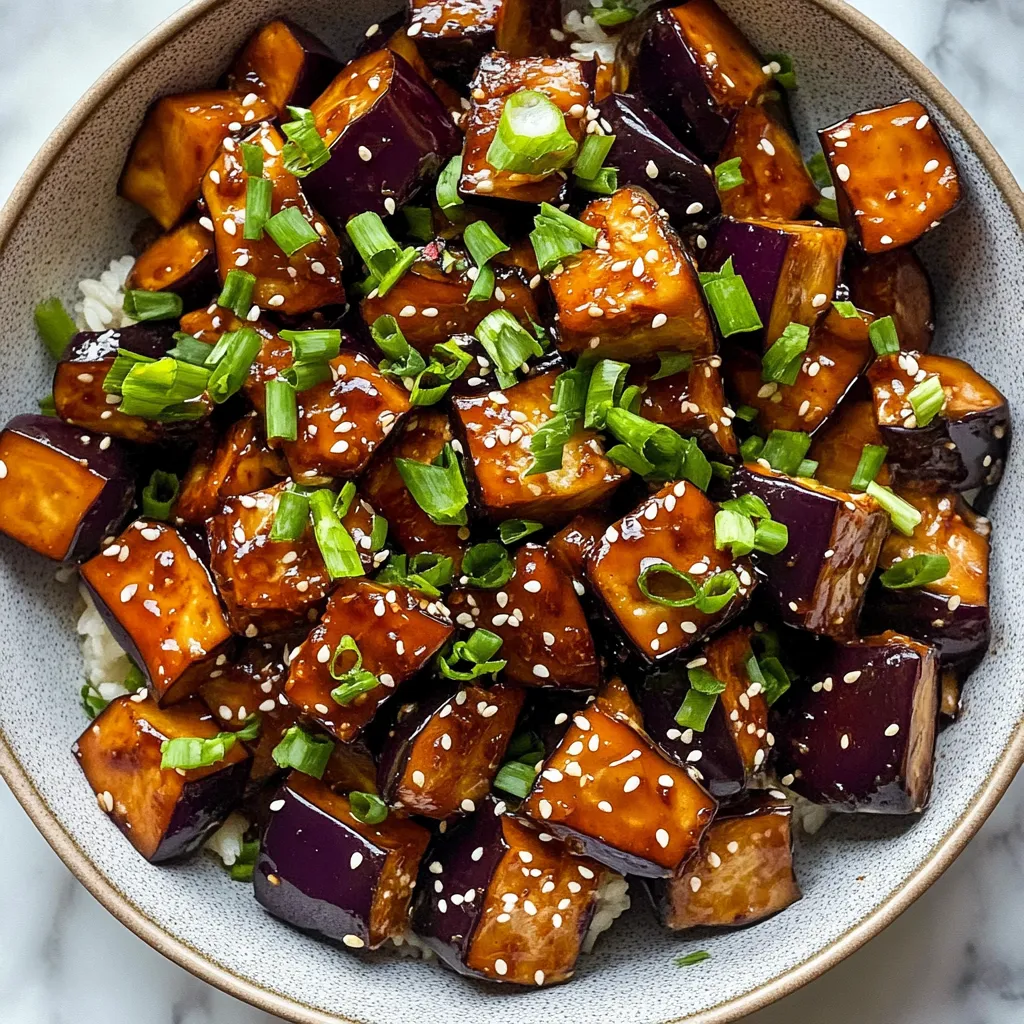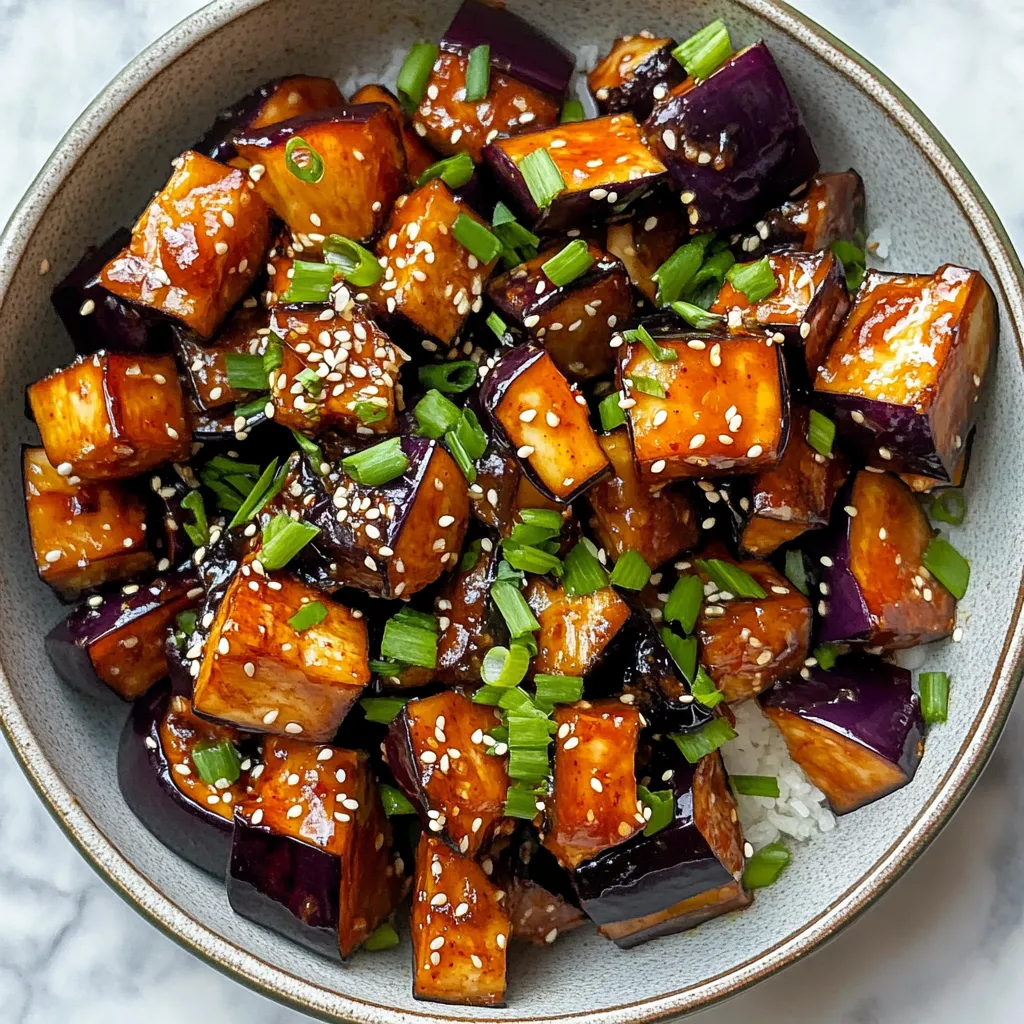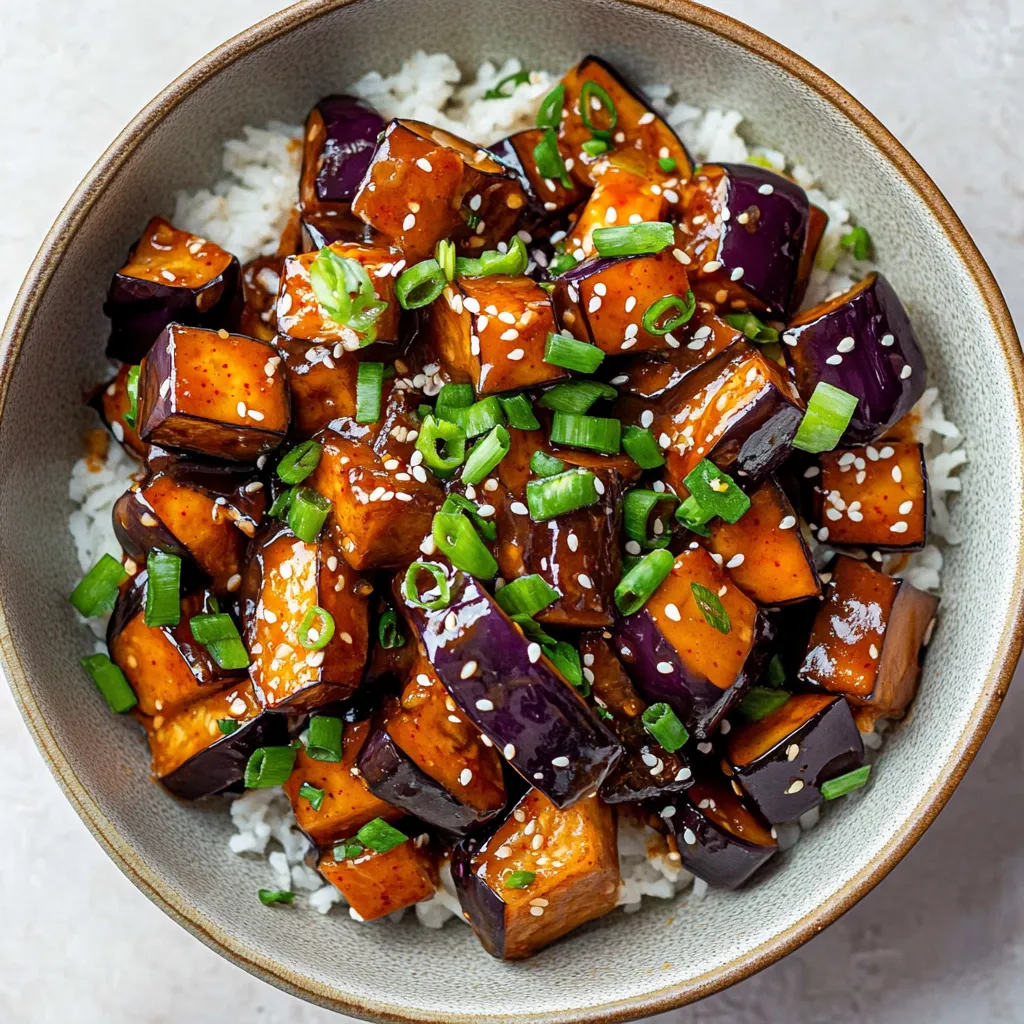 Pin it
Pin it
This zingy eggplant dish turns ordinary veggies into a fiery Korean-inspired knockout that'll make you think differently about how fun plant-based meals can be. The soft, smooth eggplant drinks up the punchy gochujang sauce, making an addictive mix that's become my go-to dinner fix when I want big flavors without much work.
This dish has bailed me out many times when folks dropped by without warning. When I first tried it, I wasn't sure about mixing eggplant with gochujang, but the blend of velvety texture and spicy sauce won over even my friends who usually hate eggplant.
Ingredients
- Medium eggplants: They soak up all the tasty sauce perfectly. Pick firm ones with shiny skin and no mushy parts
- Gochujang: This Korean red chili paste brings that key spicy kick with a hint of sweetness. You can grab it at Asian markets or big grocery stores
- Soy sauce: Gives that deep savory taste and saltiness. Go for low sodium if you're watching your salt
- Rice vinegar: Adds the tang that cuts through the rich sauce. Plain works best so you can tweak flavors yourself
- Honey or maple syrup: Balances the heat with some sweetness. Choose maple for a vegan option
- Sesame oil: Adds that nutty smell and taste. You don't need much
- Fresh garlic and ginger: They form the taste base. Don't use powdered stuff
- Vegetable oil: For cooking at high heat
- Green onions: They add fresh pop and color. Look for ones with bright, crisp stems
- Sesame seeds: They look pretty and add crunch. Try toasting them first for better flavor
Step-by-Step Instructions
- Mix Your Sauce:
- Stir together gochujang paste, soy sauce, rice vinegar, honey or maple syrup, and sesame oil in a small bowl. Mix till it's smooth all through. Your sauce should look shiny and thick enough to stick to the eggplant. You can make this up to 3 days early and keep it in the fridge.
- Start The Flavor Base:
- Warm vegetable oil in a big pan over medium high heat until it's hot but not smoking. Throw in your chopped garlic and ginger, stirring all the time so they don't burn. Cook for just a minute until they smell good and soften a bit. They should turn light gold but not brown, or they'll taste bitter.
- Cook Your Eggplant:
- Toss the diced eggplant into the pan with a little salt. The salt helps pull out water and stops the eggplant from soaking up too much oil. Let it cook for 8 to 10 minutes, stirring now and then for even browning. Don't rush this part - well-cooked eggplant should be soft all the way through with no spongy bits left.
- Add The Sauce:
- Turn down the heat to medium so your sauce doesn't burn. Pour your gochujang mix over the soft eggplant. Add most of your sliced green onions, saving about 2 tablespoons for the top. Gently mix everything together, making sure each bit of eggplant gets covered in the bright sauce.
- Let It Bubble:
- Let the eggplant and sauce cook together for another 2 to 3 minutes. The sauce will get a bit thicker and soak into the eggplant. Stir once in a while to stop sticking and mix flavors. The eggplant should look shiny and deeply colored when it's done.
- Top It Off And Serve:
- Put it all on a plate right away. Sprinkle with the saved green onions and sesame seeds. The mix of colors and textures makes it look great while adding fresh taste. Serve it hot for the best flavor.
 Pin it
Pin it
You Must Know
What I love most about this dish is the gochujang paste. I found it during a Korean cooking class a while back and can't get enough of it since then. The rich fermented flavor adds so much more than regular hot sauce ever could. Now I always keep some in my fridge to quickly jazz up everyday meals.
Serving Suggestions
This spicy eggplant goes really well with plain rice that helps cool down the heat while soaking up all that yummy sauce. For a full meal, I like to add a simple cucumber salad with a splash of rice vinegar and a bit of sea salt. The cool, crunchy cucumbers balance out the rich eggplant perfectly. If you want something more filling, throw in some pan-fried tofu chunks or a soft-boiled egg on top for extra protein.
 Pin it
Pin it
Making Ahead And Storage
One great thing about this dish is how well it keeps. Let it cool down completely, then put leftovers in a sealed container in the fridge for up to 3 days. The flavors actually get better overnight, so it's perfect for planning meals ahead. To warm it up, just microwave until hot or gently heat in a pan with a tiny bit of water so it doesn't stick. I think the leftovers taste particularly good cold in a lunch bowl with some fresh greens and rice.
Adjusting The Heat Level
While gochujang brings amazing depth, you can easily change how spicy it is to match what you like. For something milder, use just 1 tablespoon of gochujang and add a bit more honey or maple syrup. If you love heat, add a teaspoon of Korean gochugaru flakes or some fresh chopped hot pepper to your sauce. Just know that it gets a bit spicier as it sits, so leftovers might taste hotter than when you first made it.
Frequently Asked Questions
- → What exactly is gochujang?
It’s a Korean chili paste with a mix of mild heat, sweetness, umami, and a hint of savory depth. Made from chili powder, soybeans, sticky rice, and salt, it works magic in dishes.
- → Can I swap out the eggplant?
You can! Try zucchini, mushrooms, or peppers. Just keep an eye on the cooking time to avoid overcooking.
- → Can this be vegan-friendly?
Absolutely. Opt for maple syrup instead of honey, and double-check your gochujang to confirm it’s free of animal products.
- → What should I serve this with?
This pairs perfectly with rice, noodles, or grains like quinoa. It’s also yummy alongside Korean sides like kimchi or pickled veggies.
- → How do I keep leftovers fresh?
Pop leftovers into a sealed container and refrigerate for up to three days. Reheat gently in a pan for the freshest taste.
